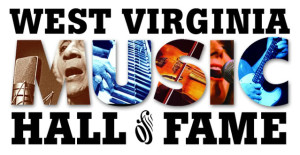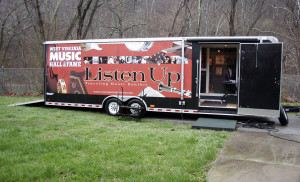By Amy Arnett
 Music is deep in the veins of West Virginia’s culture. The musicians who hail from the Mountain State represent almost every genre and come from all corners of the state, but they all share their home-state roots. At the West Virginia Music Hall of Fame, it is their mission to showcase and preserve the accomplishments of the talented artists of West Virginia.
Music is deep in the veins of West Virginia’s culture. The musicians who hail from the Mountain State represent almost every genre and come from all corners of the state, but they all share their home-state roots. At the West Virginia Music Hall of Fame, it is their mission to showcase and preserve the accomplishments of the talented artists of West Virginia.
The hall of fame was founded in 2005 by its current director, Michael Lipton, and is located in Charleston. Lipton and his staff at the museum believe that it is their responsibility to extend music education and appreciation to all 55 of West Virginia’s counties.
In 2007, the first class of inductees was welcomed into the hall of fame, and the coverage led to a series of fortunate events. Julia Lee, who was head of music and arts curriculum for the West Virginia Department of Education at the time, gave Lipton a call; she wanted to work with the hall of fame to incorporate their vast knowledge into the state’s curricula.
Lipton arranged a meeting with Lee and David Johnson, then-director of the Alabama Music Hall of Fame, and they worked on ideas for educating the Mountain State’s students in a new and creative way. According to Lipton, funding for student field trips had been cut, so they had an idea about starting what they called a traveling museum that would carry the message of West Virginia’s musical history to students around the state. Their specific goal was exposing children in more rural or disadvantaged areas to the museum’s features, but they had no idea where to start.
“What happened next was pretty remarkable,” says Lipton. “We received a call from someone who worked for Little Jimmy Dickens. He said he had a traveling museum he wanted to sell.” The offer was serendipitous, but the board of directors for the hall of fame wasn’t sure if the $10,000 investment for the traveling museum was worth it. With assurance from Johnson that he would buy it from them if they couldn’t make it work, the board purchased the museum and began preparing to tour the state.
The Good News Mountaineer Garage also offered an old turnpike vehicle that had been donated, and it’s now used to haul the museum, which is housed in a 26-foot, handicapped-accessible trailer.
Lee’s work with the museum led to $75,000 of much-needed funding to get the project off the ground. She discovered a class action lawsuit settlement fund had been designated for statewide music education, and no one had applied to receive any of the money. The hall of fame successfully applied, and they began their statewide expedition in 2009.
One of the museum’s most popular attractions is its interactive map of West Virginia musicians. The county-by-county map can be explored on a 40-inch touchscreen where musicians from each county show up when pressed. Pressing on the musicians brings up their biographies, photos and audio or video clips. The map was funded by the Greater Kanawha Valley Foundation and the West Virginia Humanities Council and is now also available online at www.wvmusichalloffame.com.
To date, the museum has visited at least two schools in every county in West Virginia and been met with excitement. “It’s proven to be a tremendous learning tool, and it’s been, by far, our most effective outreach program,” says Lipton. “It has visited nearly 500 schools and reached more than 15,000 students.”
The museum also makes appearances at fairs and festivals that include: Milton’s Pumpkin Festival, Clay County’s Apple Festival, the Augusta Heritage Festival in Elkins, Bluefield’s Lemonade Festival and the West Virginia Oil and Gas Festival.
In the future, the museum’s coordinators hope to see it keep rolling through the state, maybe with a newer truck on board sometime soon. The hall of fame and the museum are also always eager to discover new musicians and encourage involvement on every level to help spread the good news—not only the history but what’s on the horizon—for West Virginia’s music.









